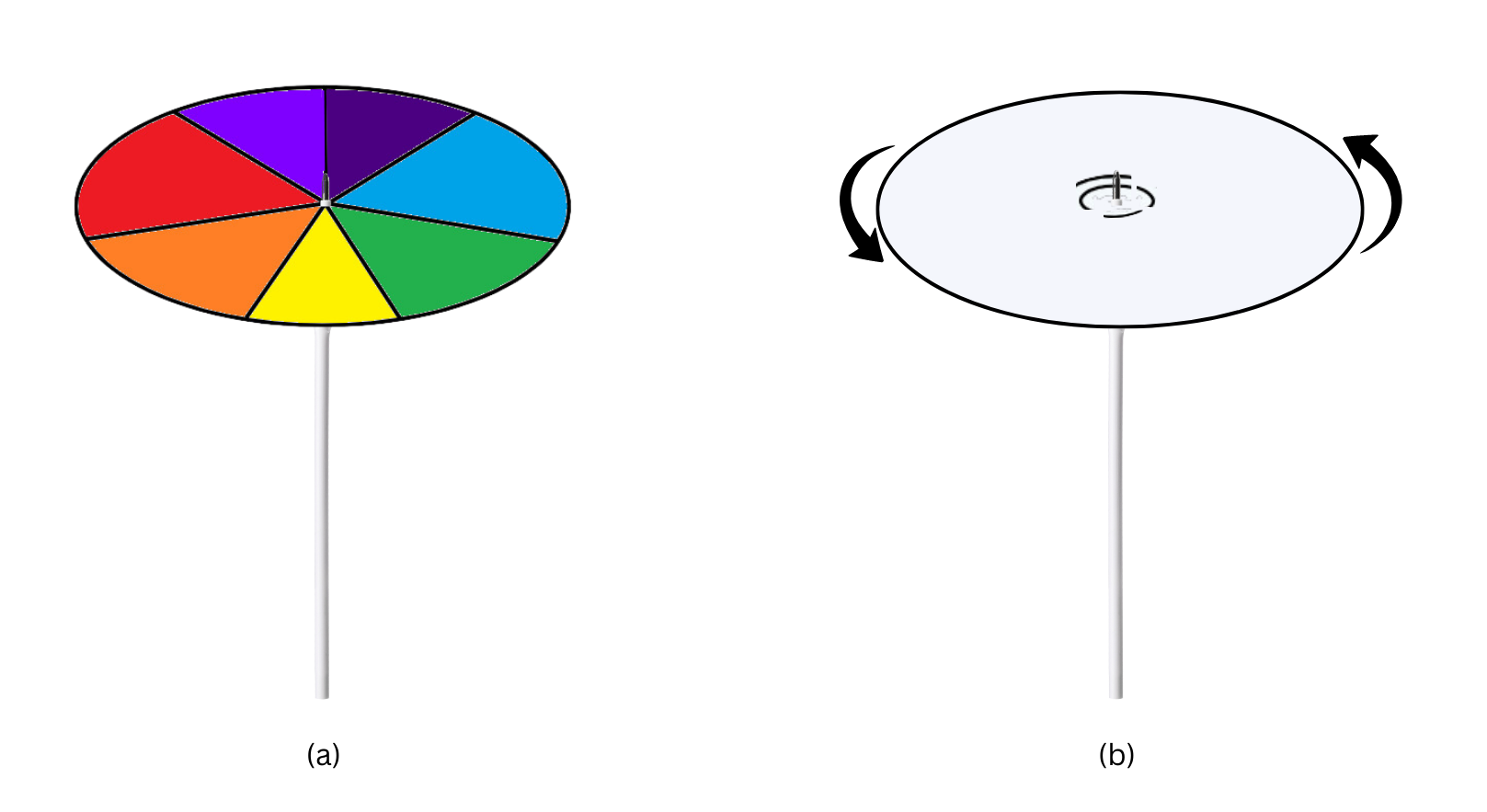12. Complete Activity 11.12 (Page 136). Take a circular cardboard disc of about 10 cm diameter. Divide this disc into seven segments. Paint the seven rainbow colours on these segments as shown in Fig. 11.31 (a). You can also paste, coloured papers on these segments. Make a small hole at the centre of the disc. Fix the disc loosely on the tip of a refill of a ball pen. Ensure that the disc rotates freely [Fig. 11.31 (a)]. Rotate the disc in the daylight. When the disc is rotated fast, the colours get mixed together and the disc appears to be whitish [Fig. 11.31 (b)]. Such a disc is popularly known as Newton’s disc.
Answer:
The activity can be carried out as follows:
Aim: Rotate a Newton’s disc, observe what happens and make the necessary conclusions.
Materials Required: Circular cardboard disc of about 10 cm in diameter, paint or coloured papers, ball pen refill.
Procedure:
(i) Take the circular cardboard disc of about 10 cm in diameter and divide this disc into seven segments.
(ii) Paint the seven rainbow colours violet, indigo, blue, green, yellow, orange and red on these segments or paste coloured papers on these segments.
(iii) Make a small hole in the centre of the disc and insert the ball pen refill into it such that the disc remains attached loosely at the top. Ensure that the disc rotates freely. The disk you have made is called a Newton’s disc.
(iv) Rotate the disc in the daylight. Rotate the disc fast and observe what happens.
Observations: When the Newton’s disc is rotated fast the colours get mixed together and the disc appears whitish in colour.

Conclusions: Since when the Newton’s disc is rotated the seven colours mix together to form white we can say that white light is composed of the seven colours violet, indigo, blue, green, yellow, orange and red.
“Take a circular cardboard disc of about 10 cm diameter. Divide this disc into seven segments. Paint the seven rainbow colours on these segments as shown in Fig. 11.31 (a). You can also paste, coloured papers on these segments. Make a small hole at the centre of the disc. Fix the disc loosely on the tip of a refill of a ball pen. Ensure that the disc rotates freely [Fig. 11.31 (a)]. Rotate the disc in the daylight. When the disc is rotated fast, the colours get mixed together and the disc appears to be whitish [Fig. 11.31 (b)]. Such a disc is popularly known as Newton’s disc.” – Solved.
Related Links:
Solution to Extended Learning Problem 1
Solution to Extended Learning Problem 2
Solution to Extended Learning Problem 3
Solution to Extended Learning Problem 4
Solution to Extended Learning Problem 5
Solution to Extended Learning Problem 6
Solution to Activity 11.1
Solution to Activity 11.2
Solution to Activity 11.3
Solution to Activity 11.4
Solution to Activity 11.5
Solution to Activity 11.6
Solution to Activity 11.7
Solution to Activity 11.8
Solution to Activity 11.9
Solution to Activity 11.10
Solution to Activity 11.11
Solution to Activity 11.12


